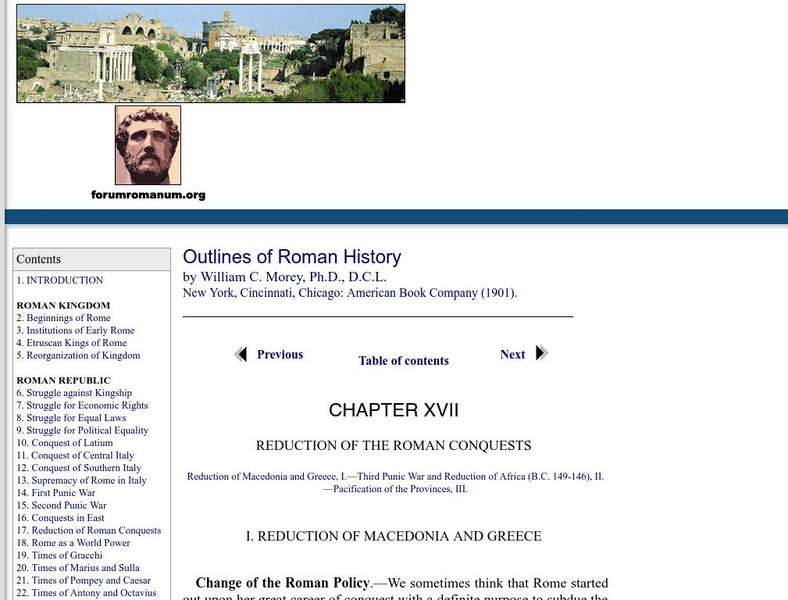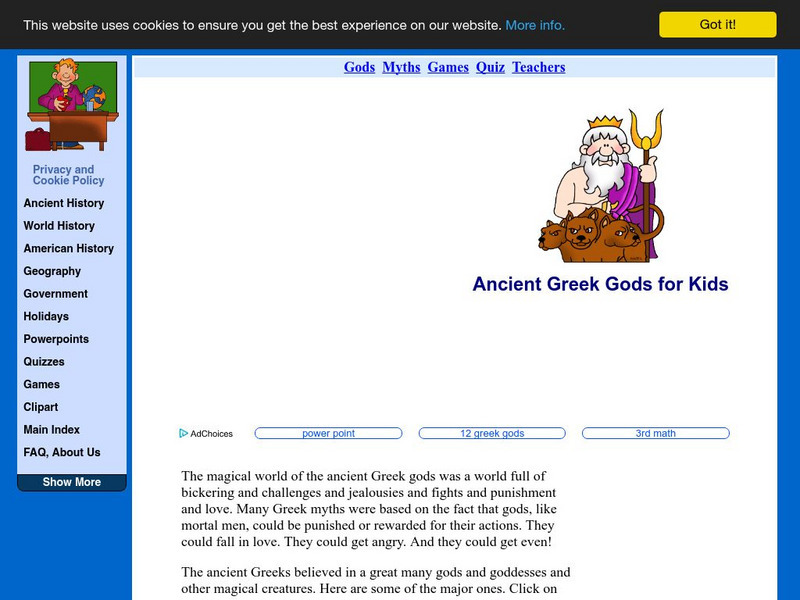Curated OER
The Art of Studying Art
Students explain the value of different genres of art. In this art lesson, students describe the differences in various genres of art and make comparisons between them. Students choose an art genre and create an original work of art...
Curated OER
Neo-Classicism
Taking students from the origins of Neoclassical art, architecture, sculpture, painting, and decorative arts to the "sunset" of the artistic movement, this slideshow provides ample infomation and examples of the art form. The slides...
Curated OER
Chapter 12 Writing: the ABCs of Language
Providing a thorough presentation on the art of written language (and not just English), this slideshow will open your students' eyes to the sociological and linguistic issues surrounding writing systems, both modern and historical. The...
Curated OER
Magazine Mosaics
Almost every teacher has a stack of old magazines lying around. Get creative and turn them into mosaics! That's right, this resource explains how kids draw, design, cut, and paste to create mosaic art from recycled magazines. Connect...
National First Ladies' Library
Why Do We Have Libraries?
Students investigate the reason and origins of libraries and conduct an information search using a variety of resources. They are divided into groups that have a specific set of questions they are to answer. Each group will then complete...
Curated OER
Early Central Heating
In this history of heating worksheet, students read about the different ways of heating rooms over time. They answer three critical thinking questions about conduction, convection and heating.
Curated OER
Science in History Part I: the Abacus To the Modern Computer
In this math information worksheet, students read one page factual accounts of the early math inventions of the abacus, the calculator and early computers. There are 40 questions to answer about the reading.
Curated OER
The Use of Myths in Science
High schoolers are told stories, myths and legend to explain their world. After telling the tales and discussion them, students are assigned to write a myth that describes a familiar situation, such as why the school garbage cans are...
Curated OER
Mother's Day
In this Mother's Day worksheet, learners read for information and assess comprehension and vocabulary skills. In this multiple choice worksheet, students answer ten questions.
Curated OER
Our Changing View of the Solar System
Students identify and name the eight planets and the five dwarf planets in our solar system. In this space science instructional activity, students view a slideshow of the planets and label them on an included Solar System chart.
Curated OER
Stolen Property or Finders Keepers
Students explore the questionable acquisition of priceless artworks gained as spoils of World War II. They become investigators and reporters looking into the matter of ownership of the world's greatest art.
Curated OER
Why Did Transatlantic Slavery Exist?
Looking for a quick introduction to the transatlantic slave trade? A student-produced presentation outlines the history behind European involvement in the triangle trade.
Curated OER
Referencing the Classical Past
Students explore the concept of myths conveyed through art. In this art history lesson, students examine "Three Goddesses" and discuss the state of the world at the time that Nollekens created the sculptures as they analyze the pieces.
Curated OER
Create a Board Game
Students research, design, and create a game board based on information learned in ancient civilizations' social studies units. They utilize computer technology to research the project, as well as, textbooks, in-class library and video...
Curated OER
Middle Ages Timeline
Learners research a historical figure from the Middle Ages. In this Middle Ages lesson, students present important events of their characters life and of the time. Learners write a time card for each significant event. ...
Curated OER
The Use of Myths in Science
Students examine folk tales to determine the basis for scientific myths. They demonstrate through the discussion of the folk tales that the perception of the world has changed as new information is gained. They write their own folk...
Curated OER
Goddesses Are Personifications Too!
Students explore the use of personification as a way of expressing ideals. They transfer this understanding to the present by creating an allegorical depiction of a contemporary ideal or value inspired by precedents in the...
Khan Academy
Khan Academy: Greco Roman
Instead of rule by a single person, Athens and Rome developed governments with widespread participation by male elites, which lasted about 170 years in Athens and about 480 years in Rome. This article discusses the rise of the Greek and...
Forum Romanum
Outlines of Roman History:reduction of Macedonia and Greece
As Rome expands her boundaries, she has to figure out how to treat the conquered lands. This site shows Rome trying different options and finally settling on the idea of provinces.
Lin and Don Donn
Mr. Donn: Ancient Greek and Roman Gods and Goddesses
A listing of Greek Gods and Goddesses and their Roman counterparts as well as what each God represented. Click on each name to access a more detailed description.
Georgia Department of Education
Ga Virtual Learning: World History: Ancient Greeks and Romans
World History learning module unit on Ancient Greeks and Romans compares Greek and Roman culture, their evolution, contributions, and eventual decline.
Khan Academy
Khan Academy: Introduction to Ancient Rome
From a Republic to an Empire. In legend Rome was founded in 753 B.C.E. by Romulus, its first king. In 509 B.C.E. Rome became a republic ruled by the Senate (wealthy landowners and elders) and the Roman people. During the 450 years of the...
Columbia University
Columbia University: Ancient Architecture
Learn about ancient architecture and explore 360 degrees panoramas of buildings in Egypt, Greece, Portugal, Italy, and Sicily. Includes an interactive plan of a 3D reconstruction of the Parthenon, and features the project page for this...
Utah Education Network
Uen: Ancient Civilizations and the Modern World
Learn how ancient civilzations developed based on the local physical features and how the boundaries of early civilizations compare to their modern counterparts.






















